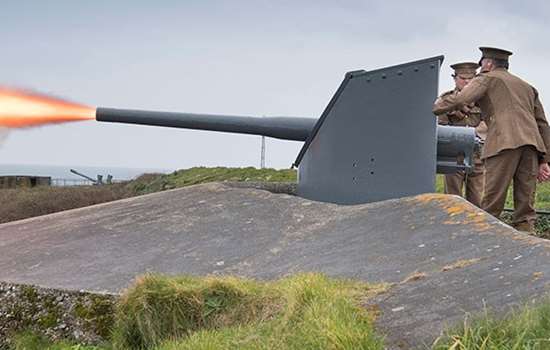22/04/2018
Operation Clothes Moth Survey Results Revealed
Results from Operation Clothes Moth show London and South East are the most at risk from clothes-eating pests, as English Heritage publishes a new guide to help fight them in the home.
English Heritage's year-long conservation survey Operation Clothes Moth has revealed warmer southern counties in England attract the most clothes moth pests.
Last year the charity asked the public to monitor clothes moths in their own homes as part of a country-wide campaign. The data collected will help English Heritage better protect its collection of historic wool carpets, fine tapestries and period clothes.
Operation Clothes Moth also uncovered an alarmingly high number of a new species: the pale-backed clothes moth. This is a useful early warning sign for conservators to prepare for the appearance of this pest at the historic places in its care.
The results come as English Heritage publishes its new guide Pests in Houses Great & Small, to help the public prevent clothes moth infestations in their own homes.
ABOUT OPERATION CLOTHES MOTH
English Heritage launched the campaign in April 2017 after conservators noticed that the numbers of common or webbing clothes moths (Tineola bissellella) had doubled over five years.
To further investigate, the charity called on the public to help it decide where and how to concentrate its conservation efforts. Visitors to its historic places were given a free clothes moth trap and asked to record the presence and type of clothes moth pests in their own homes. The results were logged on this website and have now been analysed.
Amber Xavier-Rowe, English Heritage's Head of Collections Conservation, said:
'The response from the public has been brilliant and the data we've gathered has been invaluable in informing our understanding of the clothes moth threat.
'Now that we know where the clothes moth concentration is highest, we can put in place extra measures to ensure that our historic houses in these areas are fully protected and preserved for future generations. We wouldn't have been able to do that without the public's help.'
WHAT THE DATA SHOWS
About 5000 traps were collected by visitors to English Heritage sites across the country, with data collected from homes in 42 counties. Previously English Heritage had only gathered data from 11 counties.
The newly-identified pale-backed clothes moth was registered 460 times - a number far higher than expected. This surprise result gives English Heritage further warning to look out for this type of moth and thereby prevent damage to its historic collections.
Data also shows the population of common clothes moth was significantly higher in London and the South East than anywhere else in the country. The results were as follows:
- London and South East (average of 23 clothes moths per trap)
- South West (average of 17 clothes moths per trap)
- West Midlands (average of 16 clothes moths per trap)
- East of England (average of 12 clothes moths per trap)
- North East (average of 6 clothes moths per trap)
- North West (average of 5 clothes moths per trap)
- East Midlands (average of 3 clothes moths per trap)
Other findings reveal flats or apartments are more susceptible to clothes moths as they have shared walls. Clothes moths numbers were higher in older, pre-1950 properties as they have more voids, fireplaces and attics than modern homes.
5 TIPS TO PREVENT CLOTHES MOTH INFESTATIONS
To help the public deal with and potentially prevent infestations of clothes moths, English Heritage has published a new guide, drawing on 20 years of practical experience in protecting historic collections.
Pests in Houses Great & Small (RRP £14.99) will help readers spot pests and provide solutions. Here are five tips from the book:
- Make sure clothes are clean before storing them, and keep items in vacuum bags or boxes with sealed tight lids.
- Take out items hanging inside your wardrobe and shake them at least once a month - clothes moths hate being disturbed.
- Check underneath seats for signs of webbing or 'cases', and check around piping, in deep buttons and in the seat or arm crevices.
- Look for moths in the crevices, creases and folds of clothing as well as behind labels.
- After using your vacuum cleaner, empty the contents into a black plastic bag. Seal it up and dispose of it in an outside bin.
Buy your copy of Pests in Houses Great & Small from the English Heritage online shop and all good bookshops.
Find out more about Operation Clothes Moth on our conservation page.
For more from English Heritage, follow us on Facebook, Twitter and Instagram.
More recent news
-

DAVID ATTENBOROUGH UNVEILS BLUE PLAQUE FOR HUGH CARLETON GREENE
Sir Hugh Carleton Greene was a revolutionary at the BBC, overseeing a new age of the organisation. His blue plaque was unveiled in April.
-

HELP SAVE ENGLAND'S HISTORIC CANNONS
English Heritage has launched an appeal to save the nation's historic cannons. The call comes as the charity reveal a newly conserved gun at Pendennis Castle.